It was an age often out of character but never out of characters. A new element was in the air: doubt. The Age of Reason had unbolted one of the doors of intellectual history. From that time on, man has had to sit in the chilling and bracing draft of an open mind. Sometimes that was above the threshold of what the perceived challenges were to conventional thought and a retreat was often deemed necessary. It was the genre of narrative that has recently again come to dominate our lives; the story of the secret life.
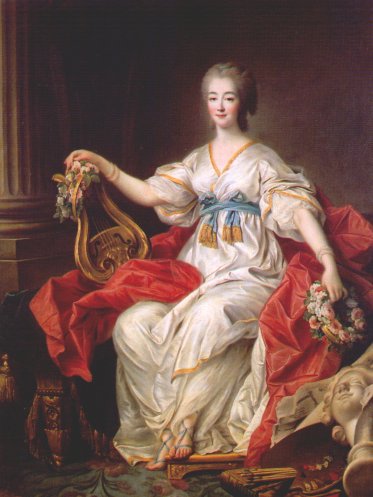
"Janne Bécu, Comtesse of Barry (1743-1793), was Louis XV's mistress and thanks to her large influence to the King, she formed a fearful plot's center into Versailles. The cohabitation with the Dauphine Marie Antoinette was always very cool and contentious. When Louis XV died on 1774, the Comtesse was banished by Marie Antoinette. Madame Du Barry went to Louveciennes, at the pavilion presented to her by the King, but during the French Revolution she was arrested and guillotined."
Imagine! A king maintaining a whole bordello for his private use! The Deer Park was built in 1750 in the hermitage at Versailles in the quarter called Parc aux Cerfs, by the Marquise de Pompadour who, in order to retain the reins of government, created this new sort of enjoyment for the king. In the beginning there were only two or three inmates in the house. After the death of Pompadour it became very crowded (très peuplée). According to another version (Mouffle D’Angerville), “the Marquise de Pompadour, since she was superintendent of his (the king’s) pleasures, had incessantly to levy new and fresh beauties, in order to stock the seraglio, wherein she was sovereign; therefrom developed the so called Deer Park (Parc aux Cerfs), that grave of innocence and virtue, swallower of masses of victims, who, when returned to human society, brought with them depravity, debauchery and all those vices, which they must have been infested with by the infamous keepers of that pleasure resort.
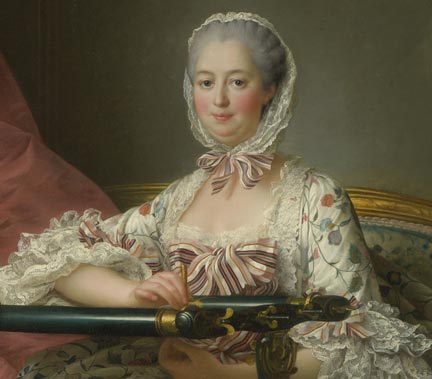
"...she likes talking and comparing ideas with Charles Duclos (historian and Secretary of the Academy of France), Bernard Fontenelle (writer and Secretary of the Academy of Letters), Denys Diderot (philosopher and mathematician, a member of the Academy of Science), Bernard Pierre (librarian at the Royal Choisy Castle) and the great Voltaire. Therefore, beyond any gossip and envy, Madame Pompadour is a real leader during the French cultural revolution that gives birth to the European Liberalism: if she wasn’t the favourite of the King, she could be certainly considered the Greatest Actress, with the highest meaning. The King becomes more and more reserved, sad and often talks about death and cemeteries. On realizing that she is much more than his lover, his only friend actually, Jeanne-Antoinette tries to amuse Louis without results. She arranges for him the Park of the Deer, on the road to St. Germain, where he can meet inoffensive (from the intellectual point of view) girls, just for his pleasure: many people say that Louis XV is the King of this place, while Madame Pompadour governs France. "
“This gap between appearance and reality, pretension and performance plagued the Age of Reason (roughly 1657-1757) and made it an age of paradox. The age professed skepticism and credulously embraced charlatans like Count Cagliostro, who had a yellow pill that would keep one permanently young, à la Dorian Gray. The age prattled of liberty, but the man the intellectual French Encyclopedists hailed as a philosopher king, Frederick the Great, was described by one British observer as “the completest tyrant God ever made. I had rather be a post horse than his first Minister, or his brother, or his wife.” The age worshiped good sense, yet “the High Priest of Reason,” Dr. Johnson, would scrape his knuckles with a penknife till they were raw, and insisted on touching every post when walking down a street ” ( Harold Nicolson )
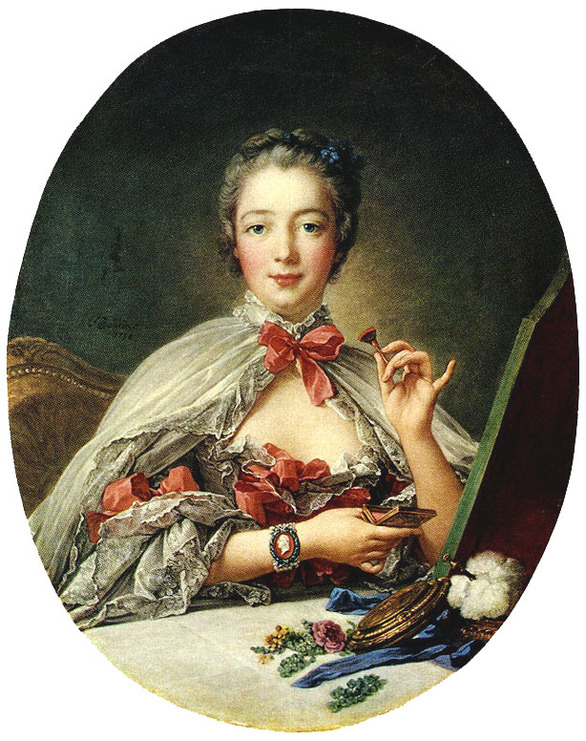
"Being very good at drawing and singing, she is invited by the Queen to sing during a party: she chooses the Armida’s monologue, “He is in my power”, making the Queen quite uncomfortable. The Marchioness loves sharing these interests with several artists. Despite her passion in promoting various artistic branches, she is in contrast with the King who says “I don’t have enough space in my Castle to gather everybody”.
If Louis XIV was the sun king, Louis XV had all he could do to reign. He was lazy, lecherous and indecisive. History has preserved his notoriety in such personal institutions as the Pare aux Cerfs (the deer park), a town house where, actually, he maintained a private brothel, and, as Author Nicolson puts it, “thereby did much damage to his repute, his constitution, and his power of application.” However, one of Louis XV’s nightly customs reveals far more about the so-called Age of Reason than his deer park….
“People’s secrets and lies have always been an abiding concern. A straight line runs from the Duke in Shakespeare’s Measure for Measure, who visits Vienna in disguise to inspect the workings of his own government, to the smooth antihero of Mad Men, who signs a contract only when he’s not using his real name. I suppose, if you wanted, you could trace the whole thing back to Jesus Christ, the ultimate secret agent, a poor carpenter who moonlights as the Son of God. But what was once just a common thread in history now dominates what we watch and read. The vampires and werewolves in the most commercially successful story of our time, Twilight, live double lives as humans. And it should come as exactly zero surprise that the Austrian man who kept a second family imprisoned in a basement for twenty-four years, Josef Fritzl, has inspired an upcoming movie…” ( Stephen Marche )
…Bedtime a I’ancien régime was a charade of pomp and circumstantial evidence. Each evening Louis XV pretended to occupy the monumental bed in the grandiose official apartment of Louis XIV at Versailles, while grand dukes and marquises vied to hold a candle or the King’s nightshirt. As soon as the last light was snuffed out, Louis XV scrambled out of bed, scurried up a secret staircase and bedded down comfortably in his own cozy petit appartement. In the morning the whole absurd ritual began again in reverse.
The end of the 18th century in France, was a time of extreme libertinage— a society fascinated, or better yet, obsessed with sex. There are reports of the bookstalls being positively awash with erotic literature. The art during this period was equally fascinated with the human body, and sensuality. Fashion and dress had also gone to extreme form, and the scene that the Marquis de Sade describes in Juliette, in which it is recommended that Juliette show herself half naked in the streets to the public if she wanted to remove the last vestiges of her modesty, is far from fictional. During Year V of the Revolution, two women paraded up and down the Champs-Elysees, completely nude except for a thin gauze.
Not even the clergy were exempt from the debauchery of the period. Contemporary Parisian police records show numerous (hundreds) arrests for all varieties of monks, curates and other religious workers caught in acts of indecency. An average example of these sorts of crimes is illustrated through the signed confession of one Honoré Regnard from 1765. During the reign of Louis XV, prostitution had attained enormous popularity and widespread toleration in Paris. Many of the “Houses” came under direct police protection. However, there were laws on the books governing these activities, and there were instances of arrested prostitutes being sent to the colony of New Orleans. Even so, it was estimated that there were 20,000 prostitutes in Paris, in a population of 600,000 (3.3%).
For Louis XV, an era of relative tranquility ended on he death of Cardinal Fleury, his prime minister who had resisted the foolish was of the Austrian sucession. Louis’s ambitious mistress, Marie-Anne de Nesle , began to press him to undertake heroic action on the battlefield, resulting in a succession of defeats and falling ill in Metz. There, he was told by the Bishop of Soissons, keeper of his conscience, that death was imminent; he must reconcile himself with God by sending the Duchesse away and begging public forgiveness. Frightened Louis yielded. On the way back to Paris, her carriage was pelted with stones and rotten fruit.
“Miraculously” Louis recovered. He rejoined the army very briefly, returned to Versailles, banished the bishop and recalled the Duchesse. But her triumph was ephemeral as his mortal illness, for she soon died of periontitis. And Louis XV, thirty-four, awaited his next mistress; a position quickly filled by Jeanne Poisson, the Marquise de Pompadour….
“For millennia, Western culture had a very simple system for dealing with bad actions. You sinned, you recognized it, you decided you wanted to change, and you were redeemed. This neat little system was called Christianity. Now “sins” are called “bad choices,” and for the price of a stay at Hazelden or Pine Grove, redemption comes in the form of rehab. For example, Tiger Woods is a famous athlete who likes to bang cocktail waitresses. Thirty years ago this would have been considered sinful but relatively healthy. (He’s a famous athlete, and that’s what famous athletes do.) But what was once a moral issue has now morphed into an illness (sex addiction) that can be treated. (Stephen Marche )

"I know just the doctor. If there's a genius behind this newfound metapathology entertainment, it's Drew Pinsky. Under the guise of medicine, Dr. Drew follows the dregs of the B-list around with a camera on Celebrity Rehab to film their various torments and conveniently manages to forget the obvious fact that celebrity itself caused all his patients' personal demons, fueled their compulsions, and drove them to these obliviating substances. There is only one word for Dr. Drew's process: satanic. Putting any addict in front of a camera for treatment reveals a staggering indifference to the destruction of human souls. But the story Dr. Drew tells is the one we want to see and hear: sin and redemption dolled up to look like a medical condition. : Stephen Marche
…She was the most complete, the most cultivated, of consorts. The friend of the philosophes, she was to become the refiner of French taste and the inspirer of a style: Louis’s Queen of Rococo, as the Goncourt brothers, meaning no compliment, crowned her. She sang, she performed, she arranged supper parties, excursions, dances and hunts. For seven years she entertained the ultimately unentertainable Louis, and ultimately, she failed. She had, he complained, the temperament of cold blooded duck. Mme de Pompadour, the perfect companion, was a flawed haetera. Do what she would, sexuality was a chore.
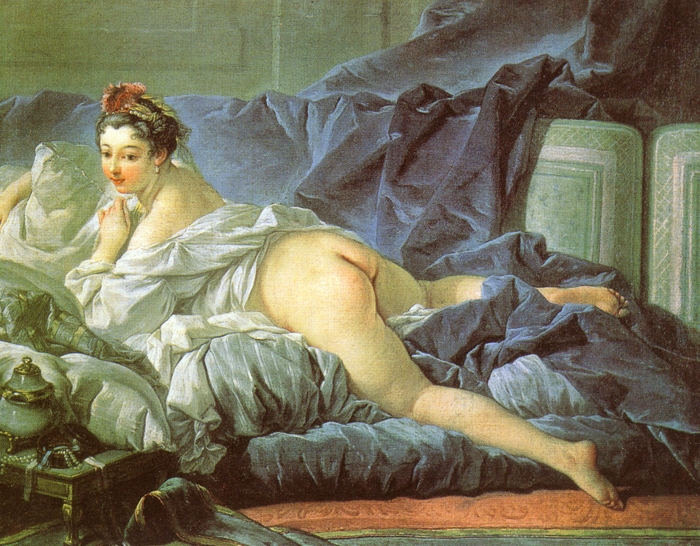
"The significant economic expansion that took place in eighteenth-century France unleashed an upwardly mobile bourgeois class, eager to solidify their arriviste status. As this social mobility increased, individuals other than the ancient nobility gained access to Versailles, insofar as they presented a convincing performance of noble identity. Edmond de Goncourt asserted: It was in the midst of these grandeurs, prosperities, and graces of finance, that a woman, born and bred of the bourgeoisie of finance, laid hold of a position which the noblesse was accustomed to consider as one of its privileges, and showed, by the fortune and the first example of a King’s mistress without birth, a fresh encroachment of the bourgeoisie, whose power she was about to make felt at Versailles.46 Pompadour personified the disruption to the court hierarchy posed by self-made..."
The effects of aphrodisiac diets on hrs mistress finally caused MMe du Hausset to speak of the matter to the Duchesse de Brancas. “For days”, the maid told her, ” Madame has but little “chocolat a triple vanille”, flavored with amber, as well as truffles and celery soup.” It was making her miserable, and worse, miserable to look at. She was terrified of losing the king by no longer pleasing him. So, the diet was abandoned and the Deer Park began.
It is uncertain just when it began exactly, or how many houses Louis XV used in that convenient quarter of versailles, but he gradually filled them with girls who were very young and preferably, virginal. In the beginning the king’s mignonnes were brought directly to the palace , but they made so much noise in their little attic rooms that they disturbed Madame de Pompadour. Lebel, the king,s prime procurer then prepared the houses in the Parc aux Cerfs, instead. The one we are certain of, at No. 4, rue Saint Médéric, was modest enough for Louis’s incognito pleasures, and convenient enough, two steps from the palace, for quick, “unremarked” visits.
The king represented himself to his Deer Park tenants as a Polish count related to the Queen, and thus eligible for residence in the nearby palace. One girl, however, discovered his identity and the secret was out. But it didn’t seem to matter. Everyone was happy. Generally the girls were lower class, “who did their work with no fuss,” says a rather approving Miss Mitford, “made no demands on him, had no influential relations or angry husbands, who did not insist upon their children being ennobled and who were content to retire with a modest dowry”.

"Following the logic prepared by Dr. Phil, Intervention, et al., Woods will eventually emerge from this scandal "healed," and by extension humanized, the better to sell golf clubs to the great imperfect masses. Nike marketers need to relax. Tiger will be back, as big as ever, and we will all be able to tell Earl Woods what we've learned: Anyone can act like an asshole and get away with it, provided he has a doctor's note. "
Mme de Pompadour , ever aware of the ladies at court jockeying for her position, was content with the lack of serious competition. One day she was pleased to remark that Lebel, who, she said, preferred her to the uncertainty of change, had found Louis a particularly pretty little sultana for his seraglio, thus cooling the king’s ardor for one of the more strenuous ladies of the court. She was complicit in stocking the Deer Park as the best of compromises; as the Goncourt’s claim, ” giving the King his freedom, while having a hand in its direction.”
The line from the Deer park to the Bastille is quite direct, as the example of Mouffle d’Angerville’s “Private Life of Louis XV” shows:
“The Saturnalia of the Romans at the time of the Caesars, the horrible Lupercalia of Tiberius, Caligula, Nero or of Agrippina, Messalina, Locusta and other human monsters were but pale copies of the scenes that took place in the Deer Park. Intoxication was here multiple; induced by play, spices, wine and other beverages, perfumes, scenes from magic lanterns, music and every conceivable kind of animal pleasure.” Moreau, from authentic sources on the connection between religion and debauchery, wrote: “Every time Louis XV wanted to spend a night in the Deer Park he not only fulfilled his religious duties with fervor, but also could not bear the young priestesses of another cult to fail in the application of their Christian belief. As soon as he was closeted with one of his odalisques he commanded her to undress behind a curtain, while he did the same.

"What Mitchell refracts through history and symbolism, Franzen confronts through detailed realism in Freedom. "There had always been something not quite right about the Berglunds," ends the opening paragraph, after listing the family's instantly recognizable and relatable contradictions: being personally environmentally conscious while professionally irresponsible, scandal-plagued while seemingly decent, arrogant and high-handed while also generous. Both books examine the basic discrepancy between how we present ourselves and who we really are. And both come to the conclusion that a double life — existing between two identities — is an inevitable consequence of the modern world. "
“Then clad in Adam’s costume they genuflected on the carpet and said the daily prayer, while they wet their forehead with holy water, which was contained in a crystal flask at the head of the bed. After they had prayed and crossed themselves, the king stroked the naked bosom of his co worshipper with his pious finger. Then they arose, stepped in bed, drew the drapes together, and the names of the Father, Son, Holy Ghost and the Virgin Mary were whispered again and again until the rites of love brought forth another vocabulary.”
D’Angerville’s angry book, which had to be published in London, appeared only eight years before the fall of the royal prison; violent and exaggerated, it nevertheless reflects popular French wrath at the time. Anger that the intelligence of the king’s little head was emptying the treasury of a starving France. The very existence of the Deer House was provocation for revolt.And in 1757, when Louis was stabbed by the religious fanatic Damiens at the foot of the Dog’s staircase, it was viewed by the people as a warning of an outraged God. Though the wound was skin deep, the religiously demented Damiens was tortured and torn apart by horses, leading to more religious prophecies that heavenly fire would rain down on the Sodom of Versailles.
The first rumors of the Parc aux Cerfs, its “orgies”, its conscripted virgins, and “strange ceremonies,” coincided by chance with the mysterious disappearance of a number of children from the Paris streets. Some had been kidnapped for the colonies, it was said, while the prettier girls had been seized as recruits for the kings Deer Park and the very young for their blood, in which leprous aristocrats were said to bathe. This resulted in a mob sacking a police station, with three participants later hanged. Louis XV now avoided Paris. “I do not see why,” he said, “I should go where people call me Herod”
In 1771, seven years after Mme de Pompadour’s death, Louis, then sixty-one, offered the hose on the rue Saint Médéric to her twenty-eight year old successor, Mme du Barry. She said “no” and he closed it down.

"... about what Norman Mailer had to say about Diane Arbus. Mailer said that "Giving a camera to Diane Arbus is like giving a hand grenade to a baby." Arthur Lubow, in an article for the NYT writes that Mailer said that "after seeing how she had captured him, leaning back in a velvet armchair with his legs splayed cockily." I think Mailer was having a laugh. The most famous Arbus photo, "Child With Toy Hand Grenade, 1962", was shot the year before the Mailer portrait."
And then, who knows how themes inter-relate? The Deer Park is almost obsessed with the whole business of what is sex, what is love, where do they combine, where do they separate, etc. etc., but the funny thing is that in its own way, so far as books have effect, it may end up being more politically exercising—since love and sex must go into morality, and morality into society—than Barbary, which for all I know may have most of its interest years from now, if there is any interest, as an example of novelisticism, and all the unconscious points it makes on what to do, and what not to do in writing fiction work.
I opened ground for you, you opened ground for me, and I think and hope The Deer Park is going to open sexual ground, because as Calder [Willingham] reported maliciously but truthfully the book is all about “fucking.” And anyway as writers we’re all prison inmates serving life terms. So tell me exactly what you think about The Deer Park, and if you don’t like it, I’ll be furious at you, but if your reasons are good enough, I’ll finally accept them. Incidentally, one funny thing about it is that everybody who’s read it a second time digs it much more the second time. Because it’s a very funny book. I don’t know a single one like it. ( Norman Mailer, Deer Park Letters )


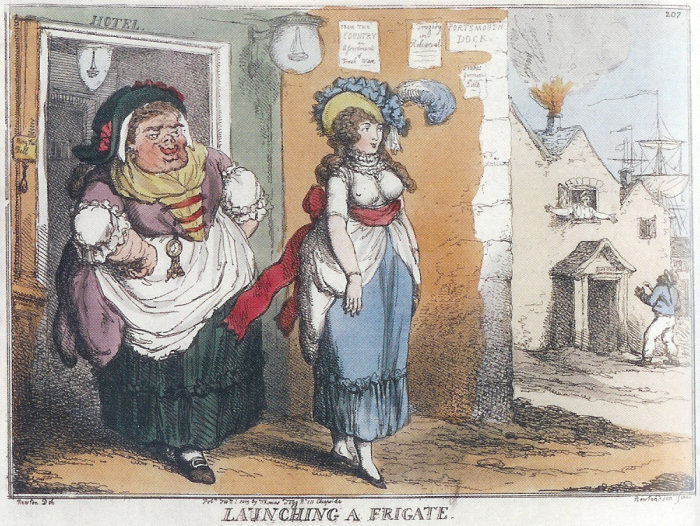
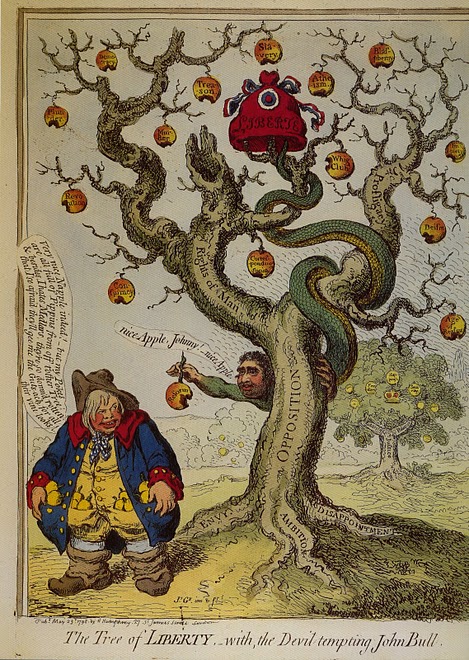



 COMMENTS
COMMENTS